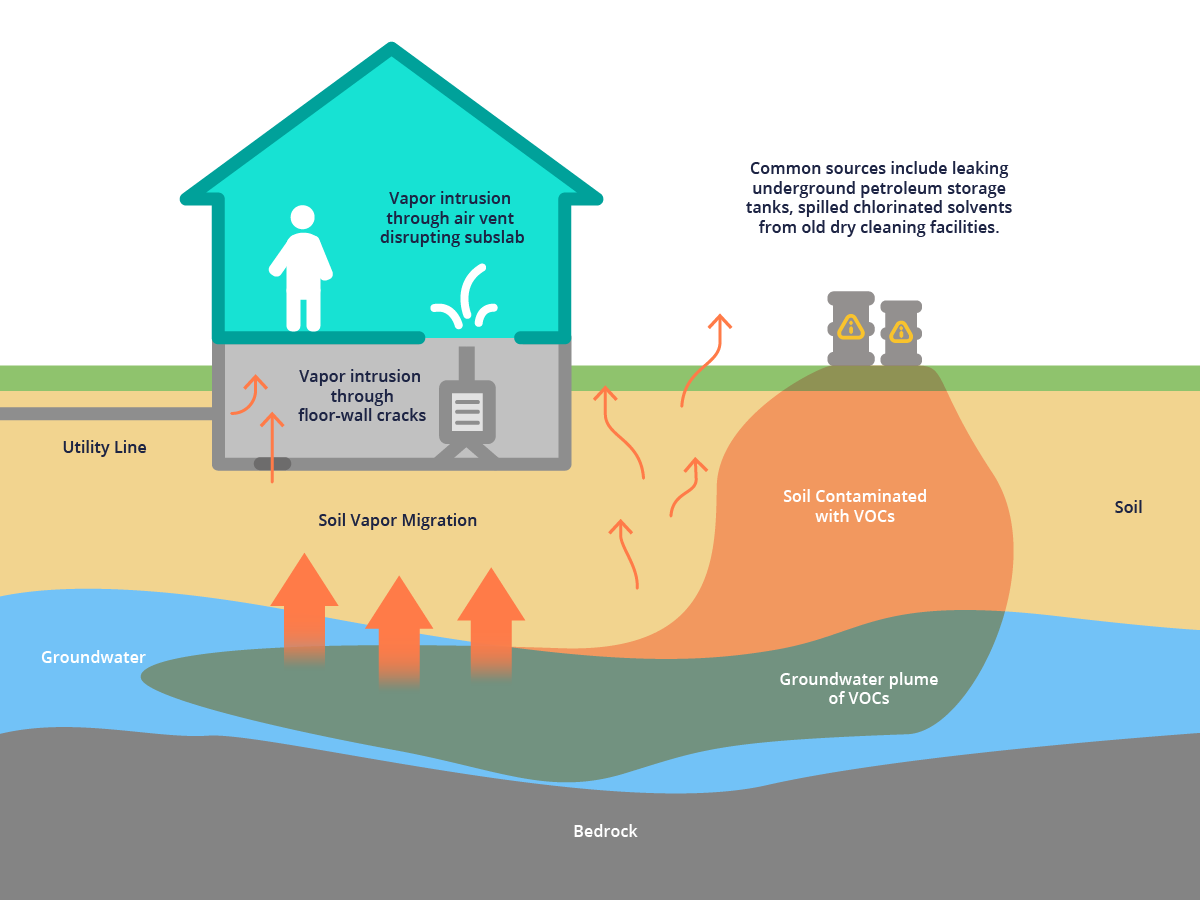Vapor intrusion, the migration of hazardous vapors from contaminated soil or groundwater into indoor air spaces, and vapor mitigation systems have become a developing concern in environmental and general health. As businesses expand and urban areas create, the potential for vapor intrusion issues rises. The effectiveness of a vapor intrusion mitigation system plays a pivotal role in addressing these concerns and safeguarding indoor air quality.
The most important phase in tackling vapor intrusion is assessing its potential risks. Certain environmental contaminants, like volatile organic compounds (VOCs) and radon, can infiltrate indoor spaces through the dirt or groundwater, presenting health risks to occupants. Distinguishing in the event that your location is powerless to vapor intrusion is crucial in deciding the need for a mitigation system.
Mitigation systems, intended to alleviate the impact of vapor intrusion, are assorted in their approaches. One normal technique includes the installation of sub-slab depressurization systems. These systems create a vacuum beneath a structure’s foundation, keeping vapors from entering indoor spaces.
The effectiveness of a vapor intrusion mitigation system relies upon various factors, including the particular contaminants included, the structure’s development, and the productivity of the chosen mitigation strategy. Regular observation and testing are essential to guaranteeing the continuous effectiveness of the mitigation system and to immediately recognizing any potential issues.
The significance of an effective mitigation system extends beyond regulatory compliance; it directly impacts the prosperity of occupants. Delayed openness to indoor air pollutants associated with vapor intrusion can lead to a range of health issues, from respiratory issues to more serious long-haul impacts. Hence, the implementation of a reliable and very well-maintained mitigation system is a precautionary measure as well as a fundamental aspect of maintaining a healthy indoor climate.
Ceaseless advancements in innovation add to the improvement of vapor mitigation systems. Arising advancements and research initiatives center around enhancing the precision and productivity of these systems, guaranteeing that they can adapt to developing environmental challenges.
Vapor intrusion is a legitimate concern that demands attention, particularly in areas with a history of contamination. The efficacy of a mitigation system determines its ability to safeguard indoor air quality and mitigate potential health risks. Regular assessments, adherence to best practices, and embracing advancing advancements are critical to guaranteeing that your mitigation system remains effective in safeguarding both the climate and the health of those consuming indoor spaces. As we keep on understanding the intricacies of vapor intrusion, focusing on effective mitigation measures is a proactive step towards creating healthier living and workplaces.

